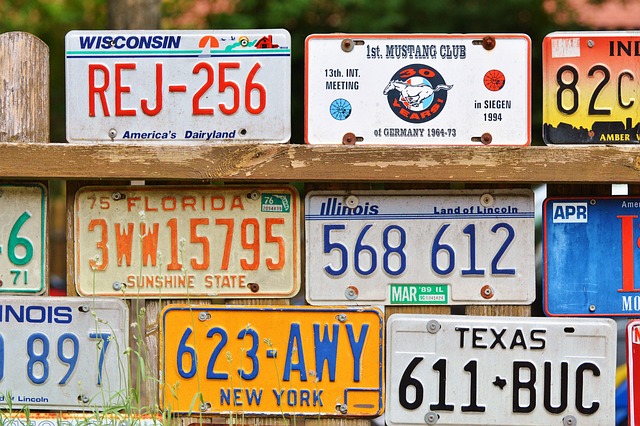Have you ever wondered where license plates come from? Well, they go back to 19th-century Europe, where cars were first invented. But license plates as we know them today, and that you need to drive in every U.S. state, are relatively recent inventions.
In this article, we’ll provide a brief history of license plates and what they are like today.
The first license plates
The first license plates in the U.S. were required in New York in 1901. Back then, the state didn’t issue the license plate. Instead, the car owner would create their own plate without any restrictions on material, style, or color and then mark it with their initials.
Some car owners would make plates of leather or wood with metal house letters. Others painted the license plate number directly on the vehicle.
By May 2, 1901, 17 people had applied for license plates and a man named George F. Chamberlain was the first to get one. By September, there were 715 who had applied, and by April 1902, licenses totaled 1,566.
The first state-issued license plates
At some point, the increasing number of license plates required a new registration system, partly because many car owners had the same initials.
On May 15, 1903, New York started assigning registered car owners a number to display on their vehicles (though they still had to create their own plates until 1910).
Massachusetts became the first state to issue license plates in 1903. These plates were made of iron and covered with porcelain enamel. The background was a cobalt blue, and the numbers were white.
Soon, other states followed suit, and by 1918, all 50 states in the U.S. had started issuing license plates.
Modern license plates
Today, license plates are issued by your state’s Department of Motor Vehicles. The federal government only issues license plates for federal-use vehicles or those owned by diplomats.
That’s not to say you can’t still customize your license plate somewhat. Many states allow you to choose your license plate number, for example, for an extra fee (if the number is available). You can also commission custom license plates for non-official uses like wall decor.
One thing is for sure: License plate designs have come a long way since 1901.
License plate registration renewals
Another big part of modern license plate registration is annual renewals. While the first license plates were meant to be semi-permanent, by the 1920s, states had started mandating registration renewals. At first, states would issue a new license plate each year with a new design or color to make it easier to identify.
Today, renewing your vehicle registration is much simpler. Typically, you pay a fee to get an updated sticker to place in the corner of your license plate over the old sticker(s). Often, you get a sticker that indicates the registration year and another one that indicates the registration month. These are color-coded to make them easier for cops to identify the expiration date.
The future of license plates
The number of registered motor vehicles in the U.S. has been steadily climbing. In 1990, it was roughly 193 million. By 2021, it was over 282 million. As vehicles continue to increase, the legacy of license plates will grow as well.
If you need to register a new vehicle, check with your state’s Department of Motor Vehicles. They can help you get squared away so that you’re driving legally. Then if a cop ever pulls you over, you’ll have the necessary registration document on hand to show them.














